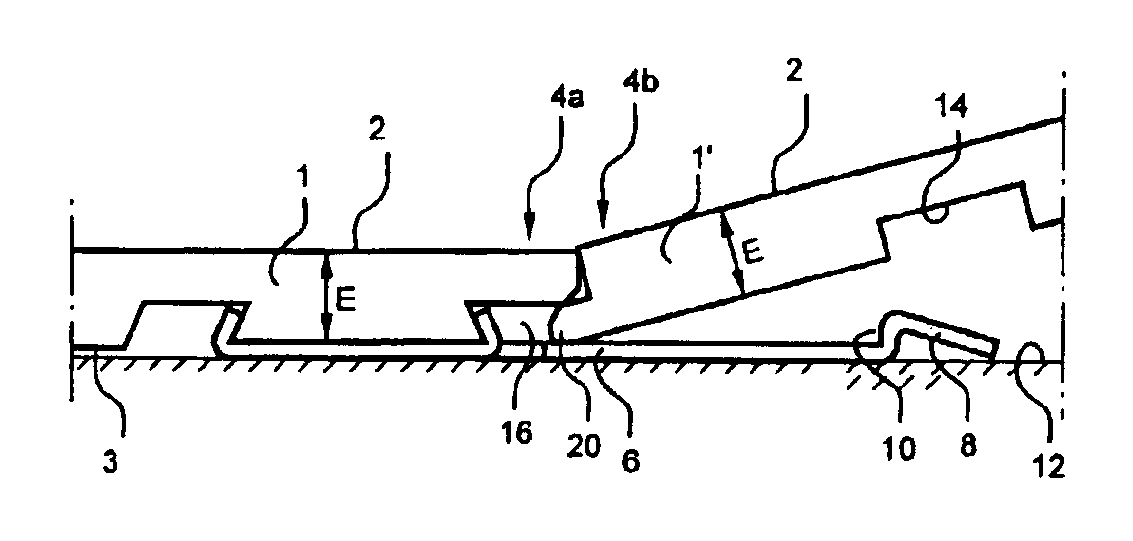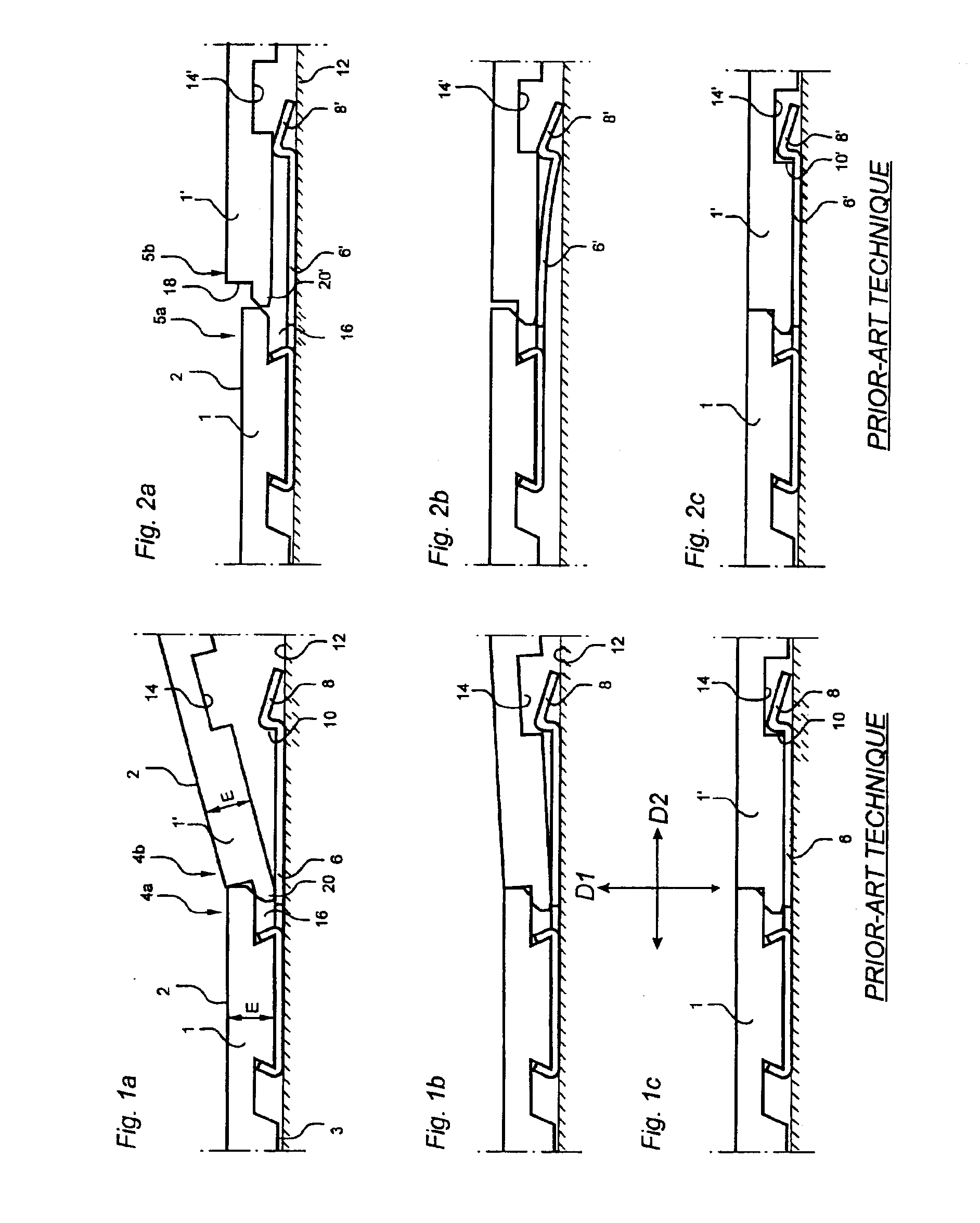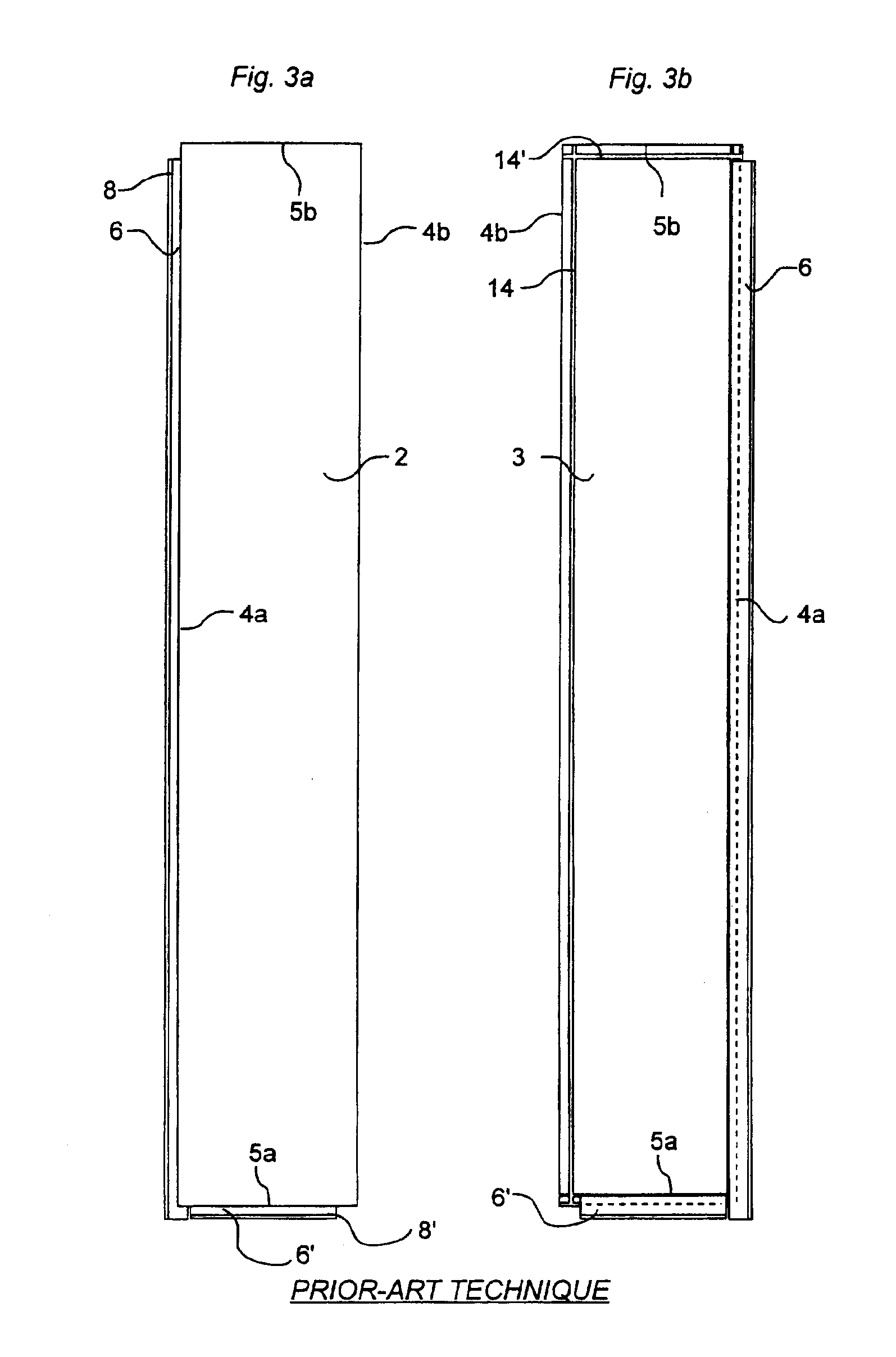Locking System And Flooring Board
a technology of locking system and flooring board, which is applied in the direction of load-supporting elements, structural elements, building components, etc., can solve the problems of high friction and difficulty in angling together and displacing the boards, different joint designs affecting the costs to a considerable extent, and the cost of waste is different, so as to achieve low friction, high guiding capability, and low cost
- Summary
- Abstract
- Description
- Claims
- Application Information
AI Technical Summary
Benefits of technology
Problems solved by technology
Method used
Image
Examples
second embodiment
[0064]FIG. 8 shows the invention. The board 1 in FIG. 8 can be used for parquet flooring. The board 1 consists of an upper wear layer 32a, a core 30 and a rear balance layer 34a. In this embodiment, the projecting portion P outside the joint plane F is to a still greater extent made of different combinations of materials. The locking groove 14 is reinforced by the use of a separate component 70 of, for instance, wood fiber, which in a suitable manner is connected with the joint edge, for instance by gluing. This variant can be used, for instance, on the short side 5b of the board 1. Moreover, a large part of the fixing shoulder 60 is positioned outside the joint F.
third embodiment
[0065]FIG. 9 shows the invention. The board 1 in FIG. 9 is usable to provide a strong attachment of the aluminum strip 6. In this embodiment, a separate part 72 is arranged on the joint edge supporting the locking element 8. The part 72 can be made of, for instance, wood fiber. The entire fixing shoulder 60 and the entire strip 6 are located outside the joint plane F. Only a small part of the separate strip 6 is used for resilience. From the viewpoint of material, the portion P located outside the joint plane F has three different areas containing the combinations of materials “wood fiber only” (P1), “wood fiber / balance layer / aluminum” (P2) and “aluminum only” (P3). This embodiment with the fixing shoulder 6 positioned entirely outside the joint plane F can also be accomplished merely by working the body of the board, i.e. without the separate part 72. The embodiment in FIG. 9 can be suitable for the long side. The locking element 8 has a large guiding part, and the projecting porti...
PUM
 Login to View More
Login to View More Abstract
Description
Claims
Application Information
 Login to View More
Login to View More - R&D
- Intellectual Property
- Life Sciences
- Materials
- Tech Scout
- Unparalleled Data Quality
- Higher Quality Content
- 60% Fewer Hallucinations
Browse by: Latest US Patents, China's latest patents, Technical Efficacy Thesaurus, Application Domain, Technology Topic, Popular Technical Reports.
© 2025 PatSnap. All rights reserved.Legal|Privacy policy|Modern Slavery Act Transparency Statement|Sitemap|About US| Contact US: help@patsnap.com



